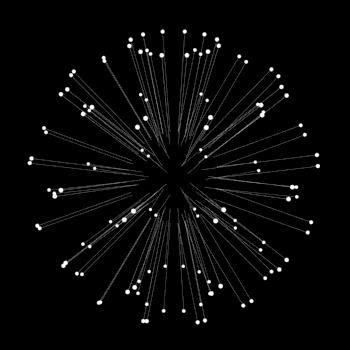Question #8cf3a
2 Answers
Via
Via
Explanation:
Assuming this behaves as an idea gas, we have the equation:
#P# = Pressure (#Pa# )#V# = Volume (#m^3# )#n# = Number of moles (#mol# )#R# = Gas constant (#~8.31Jcolor(white)(l)mol^(-1)color(white)(l)K^(-1)# )#T# = Temperature (#K# )
To find
To find the new pressure at
Now to compare this with Van der Waals equation of state:
The only new values are
#a# = the amount of attraction between particles (#Jcolor(white)(l)m^2color(white)(lmol^(-2)# )#b# = volume of a gas per mole (#m^3color(white)(l)mol^(-1)# )
For
To solve for
Which after calculating comes out as
Now to solve for the new pressure at a constant
I got
The form of the van der Waals (vdW) equation I know is:
#P = (RT)/(barV - b) - a/(barV^2)# where:
#a# and#b# are the vdW constants.#P# is the pressure in#"bar"# .#barV# is the molar volume in#"L/mol"# .#T# is the temperature in#"K"# .#R = "0.083145 L"cdot"bar/mol"cdot"K"# is the universal gas constant.
You seem to have given:
#P_1 = "33 MPa"# #V_1 = "3000 mm"^3# #T_1 = ? -= T#
#" "# #P_2 = ?# #V_2 = "30144 mm"^3# #T_2 = T_1 -= T#
Van der Waals constants can be found here or in your text. I see:
#a = "1.370 bar"cdot"L"^2"/mol"^2#
#b = "0.0387 L/mol"#
Therefore, we can solve for the temperature that this gas is at:
#P + a/(barV^2) = (RT)/(barV - b)#
#T = [P + a/(barV^2)][(barV - b)/R]#
Now, we'll need to convert our variables to the proper units.
Initial Variables
#P_1 = 33 cancel"MPa" xx (10^6 cancel"Pa")/(cancel"1 MPa") xx ("1 bar")/(10^5 cancel"Pa") = ul"330 bar"#
#V_1 = 3000 cancel("mm"^3) xx (cancel("1 m")/(1000 cancel"mm"))^3 xx (("10 dm")/(cancel"1 m"))^3#
#= "0.003 dm"^3 = "0.003 L"#
#cancel("1 g N"_2) xx "1 mol"/(28.014 cancel("g N"_2)) = "0.0357 mol N"_2#
#=> barV_1 = "0.003 L"/"0.0357 mols" = ul"0.08404 L/mol"#
Final Variables
#V_2 = 30144 cancel("mm"^3) xx (cancel("1 m")/(1000 cancel"mm"))^3 xx (("10 dm")/(cancel"1 m"))^3#
#= "0.030144 dm"^3 = "0.030144 L"#
#=> barV_2 = "0.030144 L"/"0.0357 mols" = ul"0.84445 L/mol"#
As a result,
#T = ["330 bar" + ("1.370 bar"cdot"L"^2"/mol"^2)/(("0.08404 L/mol")^2)][("0.08404 L/mol" - "0.0387 L/mol")/("0.083145 L"cdot"bar/mol"cdot"K")]#
#=# #ul"285.73 K"#
So, at constant temperature and the new molar volume of
#color(blue)(P_2) = (RT)/(barV - b) - a/(barV^2)#
#= ("0.083145 L"cdot"bar/mol"cdot"K" cdot "285.73 K")/("0.84445 L/mol" - "0.0387 L/mol") - ("1.370 bar"cdot"L"^2"/mol"^2)/(("0.84445 L/mol")^2)#
#=# #color(blue)ul("27.563 bar")#


